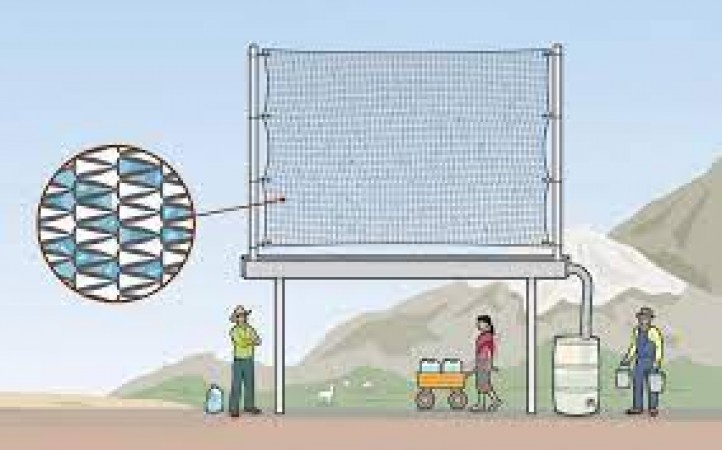
Water scarcity is a pressing issue faced by many regions across the globe, especially in arid areas where access to freshwater is severely limited. Traditional sources of water, such as rivers and groundwater, are often insufficient to meet the growing demands of communities in these regions. In recent years, an innovative solution has emerged to tackle this challenge – Air-to-Water technology.
The Challenge of Water Scarcity in Arid Regions
Arid regions experience high temperatures and low humidity, making it difficult for conventional water sources to replenish at the required rate. This scarcity affects agriculture, industry, and, most importantly, the lives of people who struggle to find adequate drinking water. Air-to-Water technology offers a potential lifeline by extracting moisture from the air and converting it into clean, drinkable water.
Understanding Air-to-Water Technology
How Air-to-Water Technology Works
Air-to-Water technology relies on the principle of condensation. Large devices equipped with advanced condensers draw in humid air, causing the moisture to condense into liquid form. This liquid is then purified, removing any impurities and contaminants, resulting in safe drinking water. The process mimics nature's own water cycle, making it a sustainable and renewable source of freshwater.
Advantages of Air-to-Water Technology
Independence from Traditional Water Sources: Air-to-Water technology reduces dependence on conventional water sources, providing an alternative during droughts or when natural sources are depleted.
Suitable for Remote Areas: Arid regions often lack infrastructure for water distribution. Air-to-Water systems can be deployed in remote locations, bringing water directly to communities in need.
Customizable Solutions: These systems come in various sizes, from small-scale units for individual households to larger installations for communities or industries.
Water Conservation: Air-to-Water technology helps conserve water by utilizing atmospheric humidity that would otherwise go untapped.
Implementing Air-to-Water Technology in Arid Regions
Factors to Consider for Successful Implementation
Climate Conditions: The effectiveness of Air-to-Water technology depends on the humidity levels in the region. It is essential to conduct a thorough analysis of climatic data before installation.
Energy Requirements: These systems require a power source for operation. Exploring renewable energy options, such as solar or wind, can enhance sustainability.
Maintenance and Training: Local communities must be trained to operate and maintain the technology, ensuring its long-term success.
Overcoming Challenges and Limitations
High Initial Costs: The upfront investment in Air-to-Water systems can be substantial. However, the long-term benefits often outweigh the initial expenses.
Water Quantity Limitations: Air-to-Water technology's water production is influenced by environmental factors, such as humidity and temperature.
Sustainability and Environmental Impact
Energy Efficiency of Air-to-Water Technology
Efforts are being made to improve the energy efficiency of Air-to-Water systems, aiming to minimize their carbon footprint and environmental impact. Utilizing renewable energy sources and optimizing the condensation process contribute to energy conservation.
Reducing Plastic Bottle Waste
With readily available drinking water, communities can reduce their reliance on bottled water. This shift promotes environmental sustainability by minimizing plastic waste and its detrimental effects on ecosystems.
Social and Economic Benefits
Access to Clean Drinking Water for Communities
Air-to-Water technology can transform lives by providing clean, safe drinking water to communities that previously struggled to access this vital resource. This improvement in water availability positively impacts public health and overall well-being.
Empowering Local Economies
The implementation of Air-to-Water systems can create job opportunities in manufacturing, installation, and maintenance, stimulating economic growth in arid regions.
Real-world Examples of Air-to-Water Projects
Several successful projects have been implemented globally, demonstrating the viability of Air-to-Water technology in arid regions. These projects have showcased its potential and inspired further research and development.
Future Prospects and Innovations
Advancements in Air-to-Water Technology
Ongoing research and development are continuously improving the efficiency and scalability of Air-to-Water systems. Innovations in materials, condensation techniques, and energy sources promise a bright future for this technology.
Potential for Large-scale Adoption
As Air-to-Water technology becomes more refined and cost-effective, there is a significant potential for widespread adoption, especially in regions facing acute water scarcity. Air-to-Water technology is a promising solution to alleviate water scarcity in arid regions. By harnessing atmospheric moisture and converting it into clean drinking water, this innovative technology offers a lifeline to communities in need. As advancements continue, the day is not far when arid regions will no longer suffer from water shortages, and access to safe drinking water will become a reality for all.
AI and Robotics Converge: The Revolution of Underwater Exploration
Feeling the Future: How Haptic Feedback Transforms VR Experiences